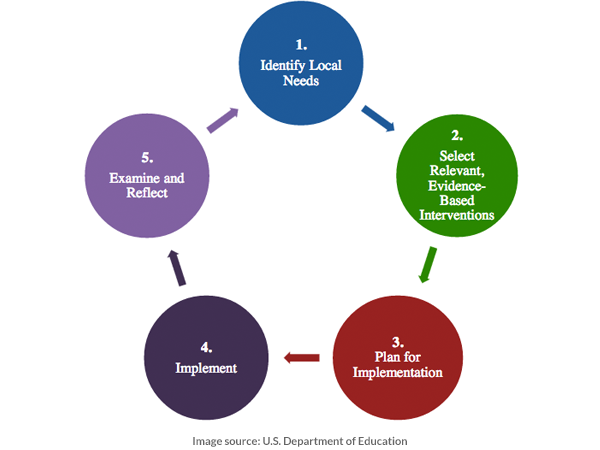
Ethical considerations for selecting educational apps
Teachers today have access to hundreds of apps (some of which are free) that promise improved ways to individualize instruction, foster classroom collaboration, and monitor student outcomes. Studies find that online applications with well-defined educational activities do positively impact students’ learning in reading, mathematics, and science. But as teachers move into this exciting new area, they should also be aware of some ethical pitfalls.
The U.S. Department of Education’s #GoOpen campaign encourages states, school districts, and educators to use openly licensed educational materials to transform teaching and learning. This campaign identified four key benefits to using online applications and courses. It can increase equity by enabling all students in all schools to access high-quality learning materials. It can minimize the use of old content in the classroom. It can empower teachers to creatively select and use the materials based on their familiarity with their students’ interests and needs. And, it can allow schools to reduce their spending on software and textbooks.
But not all apps are equally useful, and schools do not always vet them carefully. On Sept. 20, 2017, the Babson Survey Research Group announced the results of their recent survey, which studied schools’ decision-making processes for adopting apps. They found that “[n]ot all types of districts take the same length of time to complete the selection process. Districts with a greater proportion of their students living in poverty complete the process in a shorter amount of time.”
How schools select online educational materials for classroom instruction varies widely. A New York Times article suggested that in some schools, the decision-making process may be biased. According to this article, teachers’ judgments are influenced by vendors’ marketing strategies as well as by concerns that the school budget will not cover potentially better products.
The ethical concern here—biases derived from conflict of interest and lack of careful vetting—is not unique to educational technology. Just like academic textbooks, applications should be selected based on objective criteria and a systematic review of alternative products rather than on potential benefits to the teacher, such as giveaways or other perks. In public schools, professionals whose salary is paid for by taxpayers money are strictly prohibited from personal gains associated with the selection of educational materials.
Developers should avoid putting teachers in situations that could lead to a conflict of interest. The Textbook & Academic Author Association’s code of ethics requires that “[t]extbook and academic authors shall respect the freedom of instructors in choosing educational materials. Moreover, textbook and academic authors will not participate in providing compensation to schools or instructors for the adoption of their work.” Also, according to the Federal Trade Commission (FTC), teachers who recommend products to others should be transparent about receiving incentives from the vendors. The FTC further notes that an incentive does not have to be a gift with a financial value: for example, an incentive can be a professional or business opportunity.
Some risks, however, are unique to educational technology. Teachers need to ensure that the online tools protect students’ private information, in compliance with state and federal regulations. Teachers should also ensure that students are not distracted by links to external web pages that are not related to education. In collaboration sites, teachers should monitor student online behavior, including cyberbullying. For school assignments that require further work at home, teachers should ensure that students have equal access to devices and internet connectivity.
The Decision-Making Process
The US Department of Education (DOE) requires districts and schools to implement decision-making processes to protect students from potentially harmful consequences of educational technology. The DOE has published recommended steps for making decisions and monitoring outcomes. These steps emphasize taking into account rigorous education research on the effectiveness of instructional practices and interventions, as well as relevance to students’ needs and capacity for high-quality implementation.

Both The National Council of Teachers of Mathematics and the National Council of Teachers of English have published guidelines for the selection of instructional materials. The guidelines encourage teachers to use systematic criteria including the quality of the content, alignment with standards, and good fit of the instructional model to the curriculum and students’ needs and interests.An additional decision-making tool developed by Frank Porter Graham Child Development Institute recommends six considerations for selecting an educational practice or product.
Following one of these decision-making models would address some of the ethical concerns surrounding the adoption of online educational resources. Otherwise, those concerns will only exacerbate the uncertainties and anxieties that some parents—and teachers—have about innovation in education technology.
Yael Kidron is the director of Character Education at the Markkula Center for Applied Ethics.